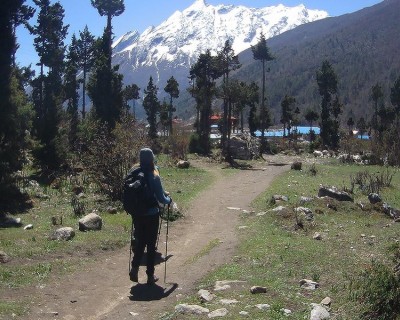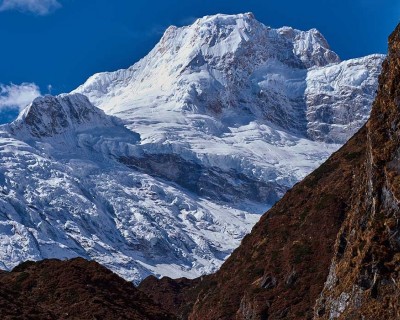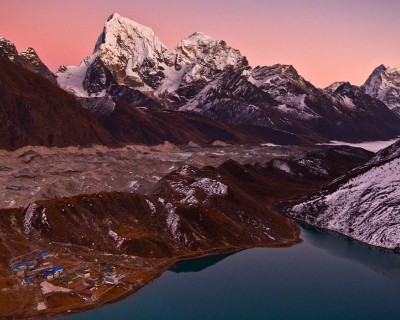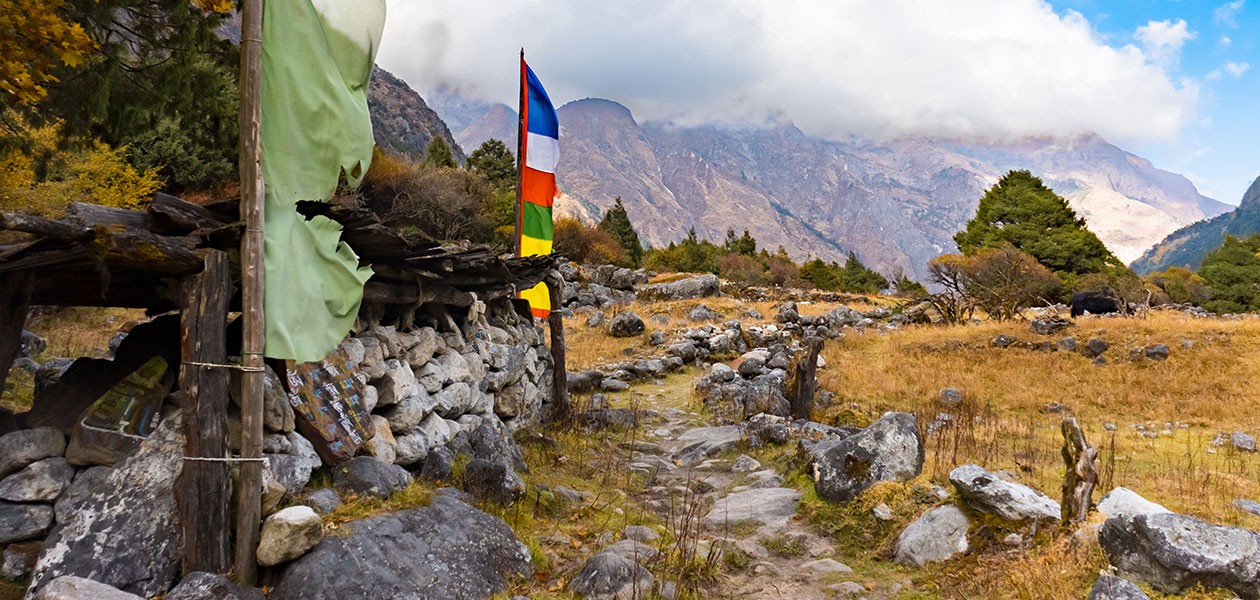
Advantages of Trekking Solo
Freedom and Flexibility
Solo trekking has more freedom and exploration when it comes to exploring the remote parts of the Kanchenjunga region. Unlike the fixed itinerary plans, walking pace, break destinations along the route and overall rest period of a fixed itinerary package, you can decide on whatever you prefer.
You can choose how long you want to spend your time on the mountain, explore the off-beaten path and re-design the itinerary plans as you see fit. In this mode of exploration, you don’t have to worry about the pre-determined set of activities and relish the experience at your own pace.
Personalized Experience
Another incredible benefit of solo trekking is the completely personalized experience. The trekking agencies do provide customizable options where you can upgrade your service or make changes to your overall itinerary plans.
However, while trekking solo, you can make those modifications spontaneously and it won’t strain anyone’s itinerary plans. You will be able to move along with your adventure plan like any of your travels at the lower elevations.
Self-Reliance and Confidence
During solo trekking, you will be venturing the remote trails of the mountain on your own. Although it can be slightly demanding both mentally and physically when you have to handle every aspect of your trip by yourself, it will certainly boost your confidence levels and promote self-reliance.
Your journey as a solo explorer will promote your individuality and help you connect with your inner self. Thus, your journey won’t be just the navigation of the majestic landscape in the Himalayas it will be an endeavor to find yourself as well.
Immersive in Nature
Although a tranquil experience is guaranteed in the Kanchenjunga Trekking route, while traveling with a large group you will have to be mindful of the overall itinerary plans. It might not be possible for you to take your time with more natural immersion while the group needs to follow specific travel plans.
Similarly, trekking in groups can also disrupt the peace and quiet Himalayan ambiance has to offer. So, you will be able to relish the true serenity and beauty of the region and take your time to admire the beauty of the Himalayas if you are doing it solo.
Less Distraction
One of the great advantages of doing a solo trek is that you don’t have to deal with any distractions during the trek. There won’t be influence or chatter of other trekkers during your trek and you can just emphasize on making the best out of your trip.
Without the presence of other trekkers, you will able to fully focus on the remarkable natural beauty of the Himalayas, the trail ahead, flora/fauna and your cultural, natural and spiritual connection.
Challenges of Trekking Solo
Safety Risks
Safety risk is one of the major drawbacks of solo venturing this isolated part of the far eastern Himalayas. High-altitude explorations have risks of injuries, accidents and even altitude sickness. Compared to regular mainstream routes that have busy trails, Kanchenjunga Trek is more of a journey in solitude.
Thus, if you don’t have proper coordination with other guides or teams on the route, it doesn’t take much time for a minor issue to turn into a major threat. Normally, in a guided trek, the crew member and guide take care of your safety and well-being.
However, you will have to manage those aspects on your own when you are doing it solo. Besides the risk of general illness, injury and altitude sickness, you also need to understand about the dangers posed by wildlife and risk assessment of the trekking trails on your own.
Navigational Challenges
Kanchenjunga Trek is an iconic but off-beaten trek to the Himalayas, where you have to navigate your way across the remote trails. Guides who have expertise in the region can easily manage even when the trails are not properly marked.
However, the same cannot be said about a solo venturer. Even if you miss a slight detour, it can cost you a lot of time and effort. Without proper navigational support, you may also miss out on the hidden highlights that are not by the main trail.
Similarly, a miss of turn during the final stretch can be both mentally and physically taxing as it won’t be easy to find the main route during the dark. So, for safe and reliable navigation, experienced guides are the best bet.
Loneliness and Isolation
In general, the trekking duration in the Himalayas lasts around 10 to 12 days. If the route is longer, then the exploration may stretch upto two weeks. However, Kanchenjunga Trek is quite different from the regular adventures and can last upto nearly a month.
Solo exploration guarantees a fun and tranquil experience. But the feeling of isolation, especially on such remote routes, can get to you. Traveling with at least a single companion will make the experience more joyful.
If you want to include social interaction, where you can share adventure stories and jokes with each other, nothing beats a guided trek. When you are enjoying the company of your fellow adventurers, even the hardship of the trek won’t feel like much of a big deal.
Emergency Situations
If you have ever been in any kind of emergency situation, then you understand how pressurizing it feels. Under such circumstances, one needs to depend on the assistance of others to bring the situation under control and follow up with proper coordination.
Now, imagine yourself in such a stressful situation where you don’t have anyone to rely on. It doesn't have to be a medical emergency; even in the case of unpredictable weather or natural disasters, having no one to rely on for assurance can push you to a despair zone.
You will also not have a proper coordination chain for the follow-up and assistance. That’s why it is beneficial to trek with a well-trained crew that knows how to handle emergency situations.
Carrying Your Own Gear
For a comfortable experience, you will need to bring appropriate clothing layers, personal care products, medications, and trekking gear. No matter how good you are at optimizing the packing list, fitting even just the essentials will make your luggage heavy.
So, does carrying heavy luggage while traversing the challenging landscape of the mountain region sound like a fun and memorable trip? Due to the extreme exhaustion, most of the time it will be just you dragging yourself from one point to another.
However, if you do trek with an agency, besides a capable guide, they will also provide a strong porter. Porter normally carries about 15 kg (33 pounds) of luggage. But, if you want to travel lighter, you can also hire extra porters.
Permit Restrictions
The Himalayan region in Nepal houses various protected and conserved areas. To access such an area, you will need to collect the necessary permit. Similarly, there are a set of rules and regulations that you have to follow while traversing those regions.
If you fail to comply with the regulations, it can lead to penalties and even bans depending on the scale of violation. There are also destinations that you cannot enter without a licensed guide. In solo exploration, you will have to forcefully skip those restricted highlights and may have to be on your guard constantly to adhere to rules and regulations.
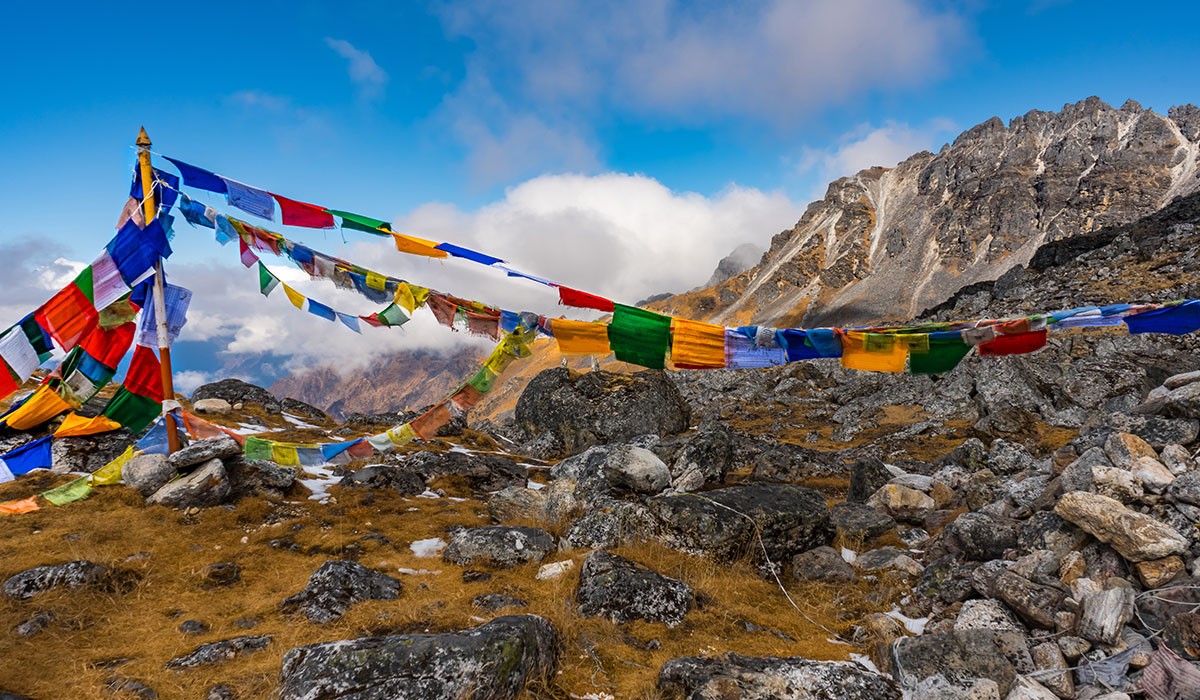
You May Like:How to Reach Kanchenjunga? - A Complete Guide
Logistical Challenges
Kanchenjunga region is not a popular trekking destination like the mainstream regions like Everest and Annapurna. There are a limited number of infrastructures and resources in this isolated route.
For the logistics details, the agencies have a good relationship with the teahouses/lodges in the area. If you are planning a trip during the high seasons like spring (March to May) and autumn (September to November), it may be hard for you to book for the services on your own.
Similarly, handling the permit application process and collecting them can be a bit of a hassle if you don’t have sound knowledge about the procedures. With an agency, you can travel worry-free as they handle these aspects of your trip.
Advantages of a Guided Trek
Safety and Security
The first priority of any trekking agency is your safety, security, well-being and comfort. If you are trekking through an agency, they will provide you with a capable guide who will handle the safety and security factors of your trip.
Your guide will be responsible for risk assessment before starting every day’s trek. They will manage your activities and check your health conditions each day throughout the trek. In case of emergency situations, they first provide first-aid assistance if needed.
Then, will move along with th set of necessary protocols coordinating with the main office. So, you don’t have to worry about anything regarding the safety and security factors during your Himalayan journey.
Local Knowledge and Expertise
Generally, guides who have experience in a particular region are assigned to trekking adventures in those regions. So, if you are exploring through an agency, you can expect the experienced guide to be familiar with the Kanchenjunga Trek route like the back of his hand.
With the help of their expertise about the region, you will be able to explore the native culture, traditions, customs and lifestyle, forming a deeper connection with the communities. Thus, during your off-beaten journey in the far-eastern Himalayas, you will also be able to relish the cultural experience in a guided trek.
Navigational Support
Guides are navigational experts when it comes to exploring the hidden treasures in the Himalayas. Their dedication for long years has helped them understand each hook and nook of the mountain route. So, there is a 0% chance of straying off the route or missing a turn, even on poorly marked trails.
Similarly, if there is a closure of the trail due to weather phenomena or other reasons, guides are capable of adjusting the route through other alternative means after assessing the circumstances. Thus, you will be able to enjoy a seamless experience even if there are minor hurdles along the route.
Furthermore, the exceptional guiding skills of your guide will also come in handy to explore the hidden or unknown gems of the region that you would have missed otherwise.
Cultural and Language Barrier Solutions
For your journey on the far-off part of the eastern Himalayas, you might learn a few phrases to greet the locals. However, unless you are a language expert, it will be difficult to have meaningful conversations on your own.
But, while doing a guided trek, your guide will act as your translator if you want to ask any questions or just have a conversation during your trip. This way, you will have a more up-close perspective on the culture, traditions and lifestyle of the locals.
Stress-Free Trekking
Contrary to the solo trek where you have to manage everything on your own, in a guided trek, a capable guide will oversee every factor of your trek. Instead of being under stress every hour, you will be able to explore more freely when a reliable guide is handling the details of your trip.
From the logistics aspects of your trek, permit handling, accommodation, meals and transportation, you will not have to worry about anything while doing a guided trek. Even during the peak seasons, you will be able to secure a good level of service in this tranquil route thanks to the relationship the agencies have with the locals.
Support with Physical and Mental Challenges
Taking on the mountain trail, especially on the most isolated section, is not an easy feat. The long and physically demanding journey will not only put your physical endurance to test but your mental fortitude as well.
Under such circumstances, a simple word of encouragement can also mean a lot. Even when you are feeling like giving up mid-way, having someone to rely on will give you assurance.
As they also take care of your health, you will be following a paced walk for proper acclimatization. Similarly, they will also monitor how well you are doing with the long hours of walking and set breaks wherever necessary.
.jpg)
Drawbacks of a Guided Trek
Less Flexibility
In a guided exploration, you will need to follow pre-determined itinerary plans. Thus, it might feel less flexible and constraining at times. Your journey in the Himalayas will move along a specific time with a set of goals for each part and rest periods along the way.
As the whole group has to stick with the set plans, there is not space for spontaneous change as per the preference of an individual. If you want more flexible touches for a personalized experience in a guided trip, you can go for the custom-tailored plans.
Slightly Higher Cost
Compared to solo treks, guided trekking adventures generally cost higher. This is due to the fact that your package will cover for all the standard expenses of the trip. Normally, a trekking package of the Kanchenjunga Trek with a reputable agency like Marvel Adventure will cover for the expenses like food, accomodation, permits, transportation, guide, porter, tax, etc.
Thus, as the guided trip manages all the factors of the trip and pays for them as well, naturally, they cost more than your solo budgeting plan. However, the assurance that comes along and the exemption from the hassle of overseeing logistics and permit/entrance details certainly promote a sweet experience for your trip.
Group Dynamics
While exploring these spiritual and tranquil trails of the far-eastern Himalayas, in a general package, you will be joined by other trekking enthusiasts. As you will be part of a group trek, the guide has to be considerate about the pace and abilities of every trekker in cumulative.
The same goes for the preferences and personalities of trekkers. So, it will be sweet if you get along, but individuality is not prioritized under such a setting. You may need to adjust yourself and set out on the exploration as a group, which can reduce personal freedom.
If you want to enjoy a private trip, Marvel Adventure can arrange that as well. We will design an ideal package as per your preference and only the people you prefer (i.e., friends and family) will join the group.
Reduced Privacy and Solitude
Trekking with a group and guide means that you are rarely alone. This can reduce the sense of solitude as you will be frequently moving along with the peaceful route as a group. For trekking enthusiasts who prefer solitude and reflection, someone always being around can feel bothersome.
Similarly, the constant chattering with the guide or among trekkers themselves can affect the moments of mindfulness and contemplation. Thus, you might have to consider private tours or solo treks to secure that sense of disconnection from the materialistic world and embrace the peaceful serenity of the Himalayas.
Also Learn About:A Day in the Life on the Kanchenjunga Trek: What to Expect on the Trail?
Solo Vs. Guided Kanchenjunga Trek- Which is Best for You?
As we have reached the conclusive part of the solo vs. guided Kanchenjunga Trek
Experience, let’s decide on which one is most fun and memorable. The ideal choice for both of these experiences will solely depend on what is your adventure preference and goals during the journey.
Solo trekking promotes self-discovery, freedom and solitude. But, when it comes to safety, navigation and logistics, the guided experience takes the trophy home. In a guided exploration, you will also be able to enjoy the safety and security features, cultural immersion, and local expertise that allow for a smoother and enriched experience.
So, if you want to settle for a safe, secure and informative option, then a guided trek is the most ideal choice. As for the solo trekking option, for the high altitude exploration in Nepal, the authorities have made it mandatory to hire a guide from 1st April 2023.
The Nepali authorities took this step to enhance the safety features of the trekkers and promote safe tourism. Thus, even if you are opting out for the solo option, you will have to bring a licensed guide along with you as your companion for the journey.
That’s why it will depend on how you want to explore the sacred trails of the Kanchenjunga region, either with a group of enthusiasts or solo safely and hassle-free with an expert companion. Ultimately, both options bring unique and fulfilling experiences to the table and help you create beautiful memories that will last for a lifetime.


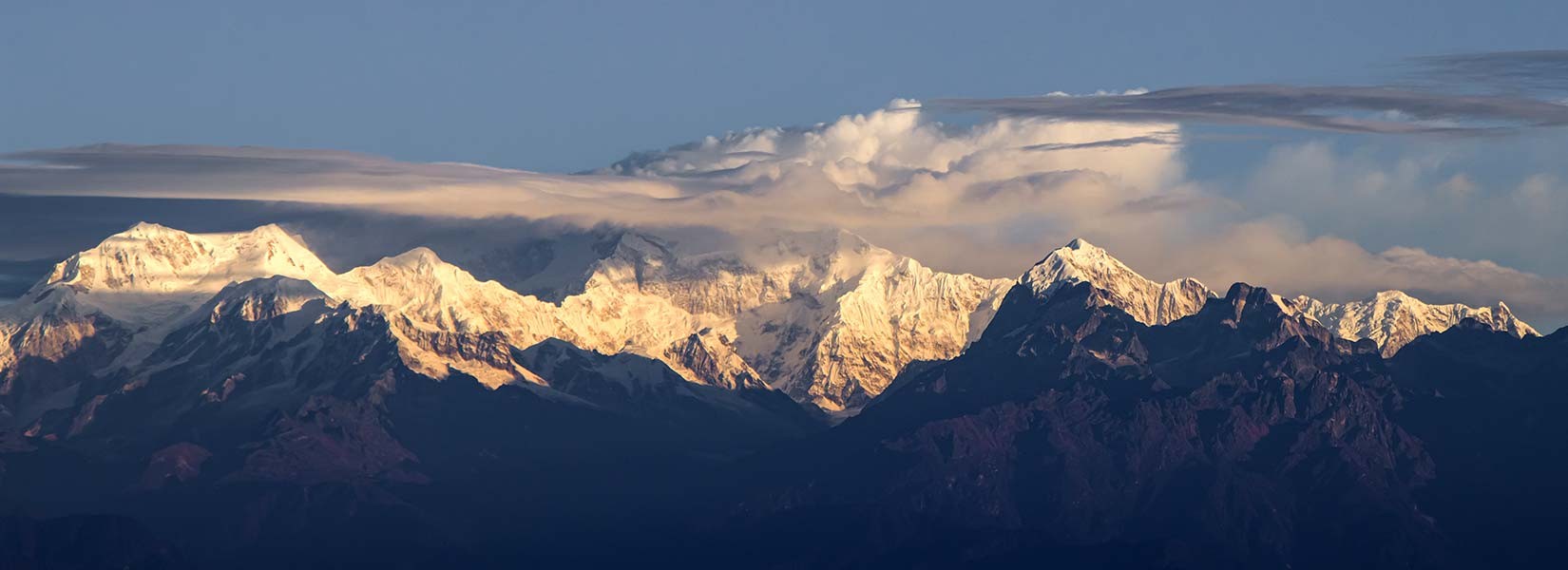


.jpg)
